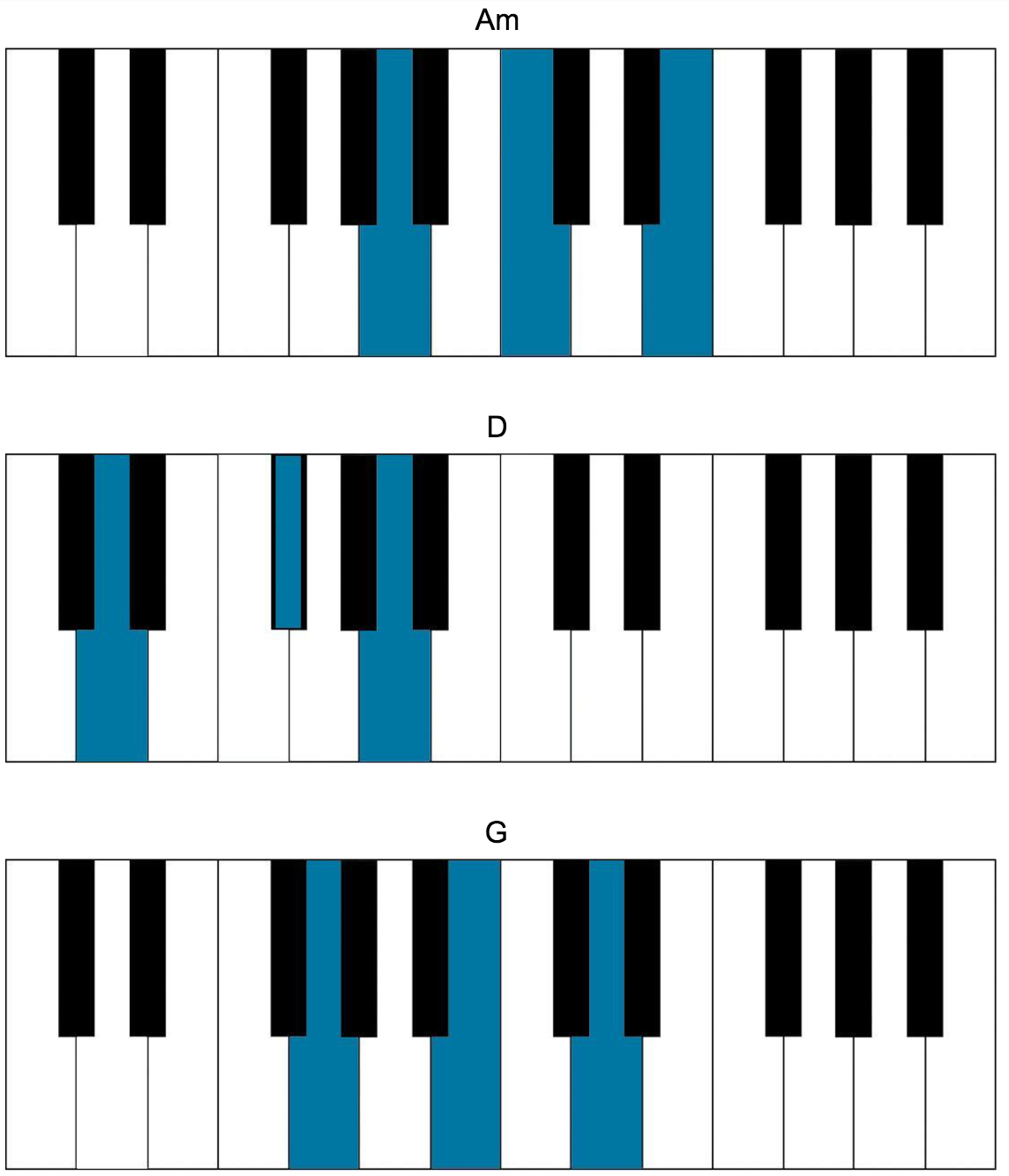
(The Beatles cadence is weaker because it doesn’t have the lift up to F-sharp before the descent into minor land.) Sadness is that much sadder if you were expecting happiness. Even the voice leading is depressing: the F-sharp and A in the D7 chord slump dejectedly down to F and A-flat in the F minor chord. So you go from the bright C Lydian sound (C, D, E, F-sharp, G, A, B) to the much darker C natural minor sound (C, D, E-flat, F, G, A-flat, B-flat.) Instead of moving from the brightest scale to the second brightest, you have just moved to a decidedly dark place. This surprising chord implies F Dorian, alternatively known as C natural minor. Instead of trotting obediently around the circle of fifths like you expect, the D7 unexpectedly resolves to F minor instead. This is not what happens in the Kalinnikov/Willie Nelson progression. There’s a bit of tension from the F rising up to F-sharp and then falling back to F, but basically, all is sweetness and light. Landing on the G7 chord puts us back in C major. The scale implied by D7 is D Mixolydian, which contains the same pitches as C Lydian, the brightest of all the diatonic modes. The most conventional (boring) chord to follow D7 is G7, followed by C. Here’s how D7 is supposed to work in the key of C: it temporarily puts you in the key of G. Why is the Kalinnikov/Willie Nelson turnaround so sad? And why is it so much more hip than the Beatles cadence? I think it’s because of the way it defies your expectations. The Beatles and Frankie Valli cadences are effective, but they’re tamer and less chromatic than the Kalinnikov/Willie Nelson chords. There’s the chromatic descent from #4^ to 4^, but rather than having 6^ fall to b6^, it just stays on 6^. Here we have the same V/V chord as in the saddest progression, but it goes to the IV chord, not the iv. In the next line, “and I would be sad,” the word “I” lands on Fm, the minor iv chord.Īnother close relative of the Kalinnikov/Willie Nelson progression is the one that opens “Can’t Take My Eyes Off Of You” by Frankie Valli. In the line “but I couldn’t stand the pain,” the word “pain” lands on F, the major IV chord. This tune is in D, but I’m once again putting it into C for discussion purposes. You can hear it at around 1:00 in “If I Fell,” in the bridge. The Kalinnikov/Willie Nelson progression is also related to the “Beatles cadence,” technically a combination major/minor plagal cadence.

I think of the blues as being more about overcoming or enduring sadness than just expressing it. The blues is wistful and has an element of pain, but it isn’t exactly sad the way that Kalinnikov and Willie Nelson are. Still, the emotional impact of the blues cliche is very different. The Dm7b5 chord similarly has three notes in common with Fm (F, A-flat and C). The Cdim7 chord has three notes in common with D7 (F-sharp, A, and C). “Way Way Back” is in F, but I’ve transposed the blues riff into C: It features prominently in a Duke Ellington tune called “Way Way Back,” as performed here by Abdullah Ibrahim:

The descending chromatic feeling you get from D7 to Fm to C is related to a timeless blues riff. Here’s a mashup of Kalinnikov and Willie:

Willie’s tune is in E, but again, I transposed into C for easier comparison. Nevertheless, the emotional effect is the same. The version of the progression in “I’d Have To Be Crazy” uses a different harmonic rhythm, and starts on the I chord instead of vi. I had the pleasure of performing this tune many times back in my country music days, and it makes a great lullaby for my kids. I mentally refer to this progression as the Willie Nelson turnaround, because I first heard it in his classic recording of “I’d Have To Be Crazy”, written by Steven Fromholz. It’s in the key of E-flat, but I transposed it into C for ease of understanding: If you listen to this piece at 6:16, there’s a particularly beautiful and tragic chord progression. The short-lived Russian composer Vasily Kalinnikov is best known (to the extent he’s known at all) for this piece of music: See also the happiest chord progression ever.


 0 kommentar(er)
0 kommentar(er)
